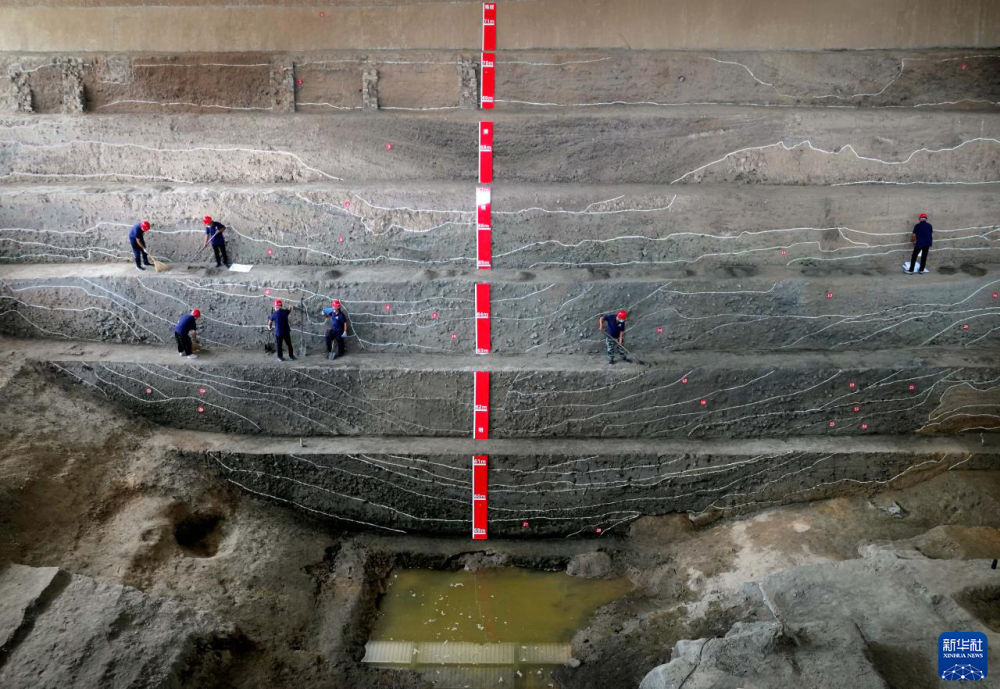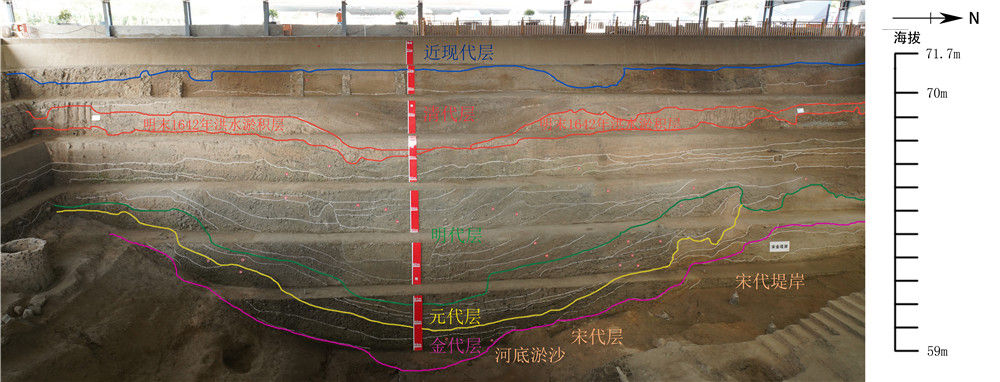Archaeological Discovery of Henan Bridge Ruins Empirical Kaifeng "City Tancheng"
Author:Xinhua News Agency Time:2022.09.28

Discovery Fang on the west side of the state bridge site (Figures of the Archaeological Team of the Site of the Bridge)
The changes in the Tang and Song dynasties from the Tang and Song dynasties were clearly visible. The embankment of the Northern Song Dynasty was pressed on the bridge of the Ming Dynasty and the Ming Dynasty. Major projects have made important progress in the Northern Song Tokyo Chengzhou Bridge site, found relics of relics in different periods, empirical of the wonders of Kaifeng "Chengxiangcheng", and witness the historical process of the evolution of the civilization of ancient Chinese cities.
"The archeological discovery of the state bridge site is abundant, including bridges, rivers, embankments, temples, residential houses, roads, shipwrecks, etc., and the materialized carriers are visually visual. It is clear that during the different periods, the bridge and road roads are the real reproduction of the wonders of Kaifeng into a cocked and compulsory city 'city cities. "Said Liu Haiwang, dean of the Henan Provincial Institute of Cultural Relics and Archeology.

Due to the war and the Yellow River, Kaifeng has been buried in sediment many times in history. Ancient city. According to Liu Haiwang, the excavation of the state bridge ruins opened the mysterious veil of "city cities" under Kaifeng City.

The Grand Canal (Luohe River) is sedified, and the river and embankment are clear.
As of now, the prefecture bridge site has completed a total of 4,400 square meters of excavation area and has found 117 relics of various types of relics. The hometown of the Grand Canal (Luohe River) on the east side was obvious. In the west side, the stone carving murals of the stone carving of the embankment of the Song Dynasty were well preserved, forming a huge long curl; The house is clearly visible;

"The state bridge is the cultural highland and spiritual logo of Tokyo City in the Northern Song Dynasty. The excavation of many relics provides empirical evidence for the passage and prosperity of the Chinese civilization. . "Liu Haiwang said. The state bridge was built in the Tang Dynasty. It is a landmark building in the middle of the Kaifeng city that spans the Sui and Tang Grand Canal. The archeological excavation also clarified the geographical location of the state bridge in Tokyo. It also revealed the form of the Grand Canal in the Northern Song Dynasty in the Northern Song Dynasty. It provided important coordinates for studying the layout of the Northern Song Dynasty cities, and for exploring the social and political forms of ancient China and the national etiquette system. The development of national civilization provides extremely rare and precious physical materials.

The section of the west wall of the Grand Canal (Luohe River) River revealed the development and evolution of the Grand Canal (Luo River) from the Tang and Song dynasties to the Qing Dynasty.
A total of more than 60,000 cultural relic specimens were unearthed in the site, of which more than 56,000 porcelain specimens were accurately reflected in the range of the canal shipping radiation. In order to understand the development of ancient porcelain industry in China, the exchange of north and south, and the development of social and commercial development.
At present, the cleaning and protection of the state bridge site is still underway.
- END -
NATO officially signed a letter of association in Finland Sweden
Xinhua News Agency, Brussels, July 5th (Reporter Ren Ke) Representatives of 30 member states in NATO signed a linked letter to the Treaty of Finland and Sweden on the 5th, and officially launched the
There are 4,559 new public parking berths in the South China Sea!And these good news!

At the beginning of 2022, after extensive solicitation of opinions from the societ...